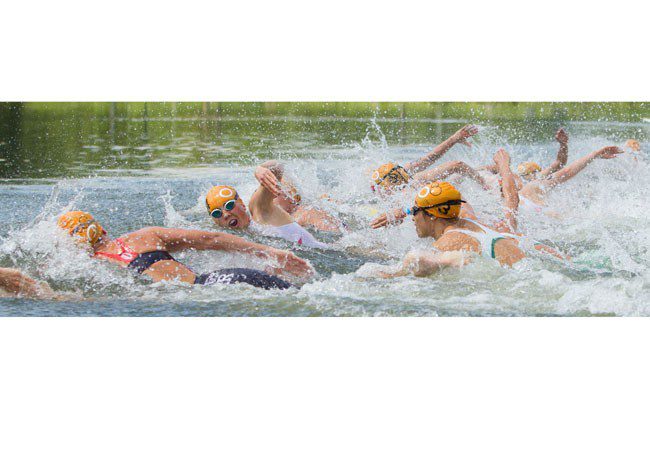Swim tips from an Olympian

Swim Secretes
by Zsofi Balazs

In her Olympic debut, Hungarian-born Canadian Zsofi Balazs was the country’s first female to compete in the 10 km open-water swimming event which became an Olympic sport in 2008. She was only 22 years old and finished 18th. Balazs is coached by open water guru and world-class coach Linda Kiefer. Here Balazs offers advice to triathletes wanting to master the open water.
Settle the swim start
There’s nothing calming about hundreds of people closing in on you in a swim start. No matter how many races I have done, the start and first turn still make me anxious. Knowing you are not alone in feeling this can actually help you go with the f low. Focus on getting your breathing under control right away. There’s a tendency to start hyperventilating and sprinting but the two don’t work together. To avoid panicking I get out to the front as fast as I can and stay there until the pack settles, then I drop back so I am not the only one working. When that’s not possible, try keeping your head up for the first 30 to 50 m to avoid the hands and feet of those in front of you as this will also make you feel in control. If all else fails, turn on your back and take a few strokes to grab some extra oxygen. This will also let you see what’s around and get your bearings.
Stay mentally sharp
I often get asked what I think about while swimming for 10 km. I always aim to stay hyper aware and in the moment. For those racing the iron distance, this is particularly important since there’s more time for the mind to wander and potentially, for effort to wane. To avoid this, I focus on what’s happening around me, keeping track of caps or the bodies beside me. I count laps because we typically do four laps of 2.5 km. I also count the buoys because it’s important to know where I need to be in terms of position so I don’t get caught in the middle of things when the pack bunches up.
Sight well and ahead of time
To maximize sighting in a race, I try to get on the swim course a few days before the race and I stop at each turn or major buoy. I look around in each direction and try and pick points that I can use to sight in the race. Look for big items such as buildings, hotels or houses that have different colours. If theses aren’t available, pick two high points and aim in between them. Many people think they need to take an exact line while sighting. But that’s not true. You just need a close enough direction so if you make a mistake you don’t need to swim a kilometre to correct it. As you get closer to a turn or buoy you will be able to make the necessary corrections. Be aware of currents and waves. Depending on those you might have to aim way off to go where you want to go. Have you ever played the game snakes and ladders? Currents can be ladders when you know how to use them, but one mistake and you snake on back down.
Grease up
One thing marathon swimmers share with triathletes is chafing. Due to a bad experience where goggles met Vaseline, I am against all grease when it comes to my races, but that means I am usually the one bleeding at the end of a race. However, if you avoid contact with your goggles, Vaseline is a great tool. Apply it with rubber gloves to be extra safe in case you need to adjust those goggles before the gun goes off. Be sure to cover everywhere your suit rubs your skin with special attention to under arms, around shoulder straps and neckline if you’re wearing a wetsuit.
Indoor Sighting Workout
Since most Canadians have to do the bulk of their swimming in a pool, it can help to practice sighting while inside. The following workout requires two swimmers who can trade off throughout the workout. One person will be required to stand at the end of the pool deck with a pile of five or more different coloured kickboards. These are to be held up for 10 seconds or less, one at a time, every second length while the other person swims an interval of 500 m or more. In addition to hitting the desired pace time (and this should be aggressive), the swimmer is responsible for looking up and keeping track of the colour of the boards in the correct order. This game can be played with large cut out numbers as well. After swimming the interval and tallying the sighting score, switch off roles. The goal of this workout is to have a short time to focus vision while working hard.
